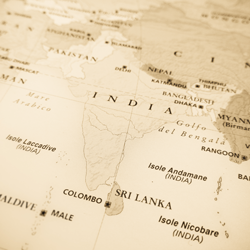
Expanding to India: 10 Maxims Every Mid-Market Business Should Know
In today’s increasingly global environment, it is important for small and medium-sized businesses to consider a global footprint. India, one of the fastest growing major economies in the world, poses an interesting proposition for small and medium-sized firms in the US. The fundamentals of the country — including disposable income, domestic economy, demographic dividend, and the world’s largest middle class — make the opportunity hard to ignore. That is part of the reason why many private equity firms have been investing in the country at unprecedented levels.
For example, a report by Boston Consulting Group (BCG) projects India’s robust economic growth and rising household incomes would take consumer spending to US$ 3.6 trillion by 2020. The report further stated that India’s share of global consumption would expand more than two times to 5.8 per cent by 2020. The growth in India’s consumer market will be primarily driven by a favorable population composition and rising disposable incomes. A study by the McKinsey Global Institute (MGI) suggests if India continues to grow at the current pace, average household incomes will triple over the next two decades and it will become the world’s 5th largest consumer economy by 2025.
Additionally, India is poised to become the world’s youngest country by 2020, with an average age of 29 years, and account for around 28% of the world’s workforce. In comparison, the average age is expected to be 37 years in China during the same period.
Because India presents such a credible opportunity for strategic growth, it is worthwhile for every company to consider the country as a viable market. However, like any cross-border strategy, there are necessary cultural considerations. Through my own experiences of managing and growing companies in India, I am offering 10 lessons for those who are willing to make the move:
1. Nothing is at face value; one must consider motivation and evaluate all options rigorously.
India is a country rich in colors and contrasts. Unlike America where people and transactions are mostly transparent or even black and white, in India shades of grey are more the norm. Thus, it is important to know the motivation of all the players and to learn to play Sherlock Holmes instinctively, in determining who gains or loses in a deal!
2. Everybody says they are connected; fact is it’s a game of bluff; yet some indeed are connected.
Though it is a more common in Delhi and north India, people tend to brag about their personal connections with politicians and bureaucrats to get things done. This must be taken with a grain of salt because even if someone does have the connections to get an audience at will with a key decision maker may be questionable.
3. No one says “No”; everyone agrees to everything, even if/when they disagree in reality.
I learned this the hard way and found it common even among my friends, and applicable even to social interactions. Some say this is common in other parts of Asia too. In general, whether it is out of manners and respect, or something else, people typically do not say no when asked to do something or be somewhere. And then at the last minute interesting excuses are tossed around to explain the aberration.
4. Cannot trust “most” people; yet it is possible to play the game fairly and transparently.
Related to the points mentioned earlier, because things are not transparent and people are not vocal about their true preferences or decisions, it takes time to understand dynamics and build trust. Yet, I found trustworthy people are just as common as others. The key is to take the time to do adequate homework in backgrounds and past performances.
5. Incentives are absolutes; must be designed for the right people/partners.
In addition to finding the right people, motivating them through incentives can work wonders. The incentives do not have to monetary. I realized some of the best incentives were recognizing people for good work and giving them respect and honor when due.
6. Almost nobody takes decisions; key is to find the people who do take decisions.
I found this more common with older employees and even among senior executives of large organizations. Typically people do not want to be accountable and pass the buck along. The younger generation is different, however. They are not afraid to make mistakes and take charge.
7. Deadlines are arbitrary; one must lead from the front and stay on top of deliverables.
It is a common joke that Indian time (IST) functions on its own time! Things do not take shape until the last minute and so it is best to set milestones and continuously measure them.
8. Ounis/Biis (19/20) principle
As someone who is very detailed oriented, this was one of my most frustrating lessons. I learnt to accept that it was in my best interest to not expect perfection; almost everyone is happy with something short of perfect. This is reflected in all products and services.
9. Jugaad (improvise) principle
People and organizations tend to not put things down on paper and follow standard operating procedures. I implemented SOPs for two of the largest organizations in their respective industries and was surprised, that despite their size they had not implemented SOPs until then. On the flip side, this can also be of unique use, when one needs to think outside the box and improvise!
10. Building the right team and motivating them is the most important ingredient to success.
As mentioned in #4 and #5, finding the right folks, who will take decisions independently and motivating them through incentives is critical. I personally found while financial incentives work, it is just as important to appease to people’s sense of self-worth.
Finally, India is a fascinating country, full of contrasts and vibrantly rich in cultural diversity. Under the surface there are even a lot of similarities between America and India. Indeed, India is a wonderful place to work, live and do business; particularly for those not faint of heart.
